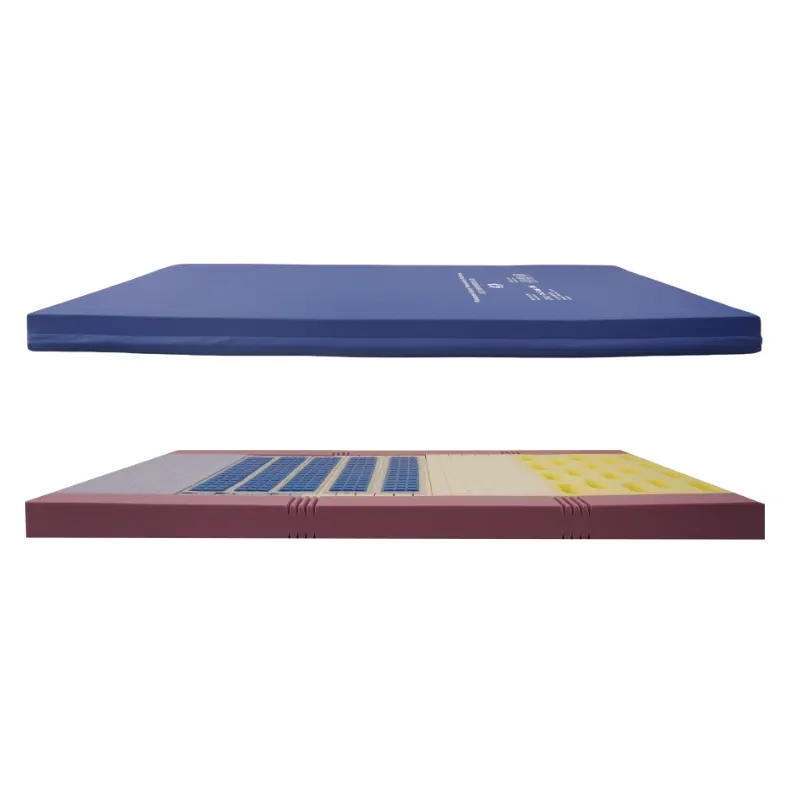Importance of Pressure Relief Mattress for Preventing Pressure Sore and Its Influence on Patients
Pressure sore (bedsore) is one of the common complications of long-term bedridden patients. Its occurrence not only brings physical pain to patients, but also may prolong hospitalization time and increase medical expenses. As an important tool to prevent pressure relief mattress, the function and design of pressure relieving mattress are particularly critical from the patient's point of view.

The Formation and Influence of Pressure Relief Mattress
The formation of pressure relief mattress is mainly related to factors such as long-term compression of local tissues, blocked blood circulation and skin friction. The following are the main effects of pressure relief mattress on patients:
- Physical pain:
Pressure relief mattress usually manifest as local skin redness, ulceration and even necrosis, which brings severe pain and discomfort to patients.
- Delayed recovery:
Pressure relief mattress will increase the risk of infection of patients, prolong the healing time of wounds, and thus delay the overall rehabilitation process.
- Psychological burden:
Patients who stay in bed for a long time with pressure relief mattress are prone to psychological problems such as anxiety and depression.
- Economic burden:
The cost of medical care for the treatment of pressure relief mattress is high, which puts pressure on the family economy of patients.
The Key Function of Pressure Relieving Mattress
As a specially designed medical equipment, the core purpose of pressure relieving mattress is to prevent the occurrence and development of pressure relief mattress by dispersing body pressure, reducing friction and promoting blood circulation. The following are the key functions of the pressure relieving mattress:
- Dispersion pressure:
Through special materials and structural design, the pressure relieving mattress distributes the weight of the body evenly to avoid long-term compression of local tissues.
- Promote blood circulation:
Pressure relieving mattress can reduce the pressure on blood vessels, thus improving the blood supply of local tissues and preventing ischemic necrosis of tissues.
- Reduce friction and shear force:
Some types of pressure relieving mattresses have special coatings or materials on their surfaces, which can reduce the friction and shear force when patients move and protect the integrity of the skin.
- Provide comfortable support:
Pressure relieving mattresses provide patients with moderate softness and support, relieve physical pain and improve comfort.
The Types and Characteristics of Pressure Relieving Mattress
At present, there are many kinds of pressure relieving mattresses on the market, and each type has unique characteristics according to the needs of different patients:
- Dynamic air cushion bed:
Dynamic air cushion bed changes the pressure distribution on the mattress surface through periodic inflation and deflation, which is suitable for patients with high-risk pressure relief mattress. This mattress can effectively prevent local tissue compression caused by long-term bed rest.
- Gel mattress:
Gel mattress uses the high elasticity and good thermal conductivity of gel material to provide uniform support and reduce friction, and at the same time, it can effectively dissipate heat and prevent skin from being damaged by damp heat.
- Low air loss mattress:
This kind of mattress keeps the surface of the mattress dry by continuous airflow, which is especially suitable for patients with skin infection or large area trauma and can significantly reduce the risk of infection.
- Memory foam mattress:
Memory foam mattress can adjust the support strength according to the patient's body shape and body temperature, and provide patients with personalized comfort experience, which is suitable for patients with mild to moderate pressure relief mattress.
- Hybrid mattress:
Hybrid mattress combines many technologies, such as the combination of air cushion and memory sponge, which has multiple advantages and is suitable for patients who need long-term care.
-
Sleep Tracking Mattress GuideNewsJul.28,2025
-
Silicone Mattress for Everyday ComfortNewsJul.28,2025
-
Mattress for Pressure Point ReliefNewsJul.28,2025
-
Customized Comfort with Specialized MattressesNewsJul.28,2025
-
Cool Gel Foam Mattress for Better SleepNewsJul.28,2025
-
Coir and Foam Mattress GuideNewsJul.28,2025
-
Ambulance Stretcher Mattress: Reliable Comfort on the MoveNewsJul.28,2025

